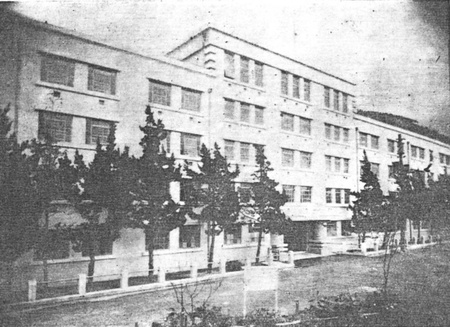What is the difference between immigrants and migrants? And although we don't hear them much these days, the words "migrant," "migrant," and "immigrant" were also used in the past. What is the difference between these words?
To get straight to the point, these all refer to the same thing, they were just used at different times. However, their meanings have changed over time. Furthermore, they are deeply connected to the beginning of the phenomenon of migration and changes in circumstances. Let's look at the background of these words while confirming when they were used.
Historically, the order in which these words appeared is immigrants, immigrants, immigrants, immigrants, and immigrants. However, at first, they seem to have been used almost without distinction. The word "immigration," which does not refer to a person but describes the act, first appeared in the Chugai Shimbun on July 20, 1869 (Meiji 2), under the title "Japanese Emigration to America." However, the word "immigrant" was the earliest word to refer to a person, appearing in the Yomiuri Shimbun on May 6, 1884, under the title "Protection of immigrants by the U.S. government." Two years later, in 1886, the word "immigrant" was used in multiple places. Two years later, in 1888, the Tokyo Asahi Shimbun also used the word "immigrant." Regardless of whether the ending was "jin" (people) or "min" (people), the word "immigration" appeared from the mid-1880s onwards, except for the Chugai Shimbun in 1869. This overlaps with the time when the so-called government-sponsored immigration began in 1885. In other words, it can be assumed that the mid-1880s was the time when the phenomenon of "migration" became generally known.
There are two other examples that support this. One is a foreign news article titled "Emigration of French People" in the Yokohama Mainichi Shimbun dated April 5, 1879. In this article, the translation of "emigration" is "shusaku" (working abroad), and the word "immigration" was not yet used. Another example is the Waei-ei-wagorin-shusei (Japanese-English-Japanese dictionary), written by James Curtis Hepburn, who is famous for his Hepburn-style dictionary. This dictionary was the first Japanese-English-Japanese dictionary published in Japan in 1867. The first edition includes the term emigrate, but its meaning is Utsuru; hiki-kosz (to transfer, to pull), and the Japanese-English entries do not include the terms "immigration" or "immigrant." The words emigrant, immigrant, and migrant are also not found in the English-Japanese entries. However, the third edition, published in 1886, includes the following terms:
Ijuu (Utsuri sumu)
Removal or changing one's dwelling place; emigration from one country to another:
- nin , an immigrant
Emigrate, I will take you to the top,
In other words, it can be confirmed that the words "immigrant" and "immigrate" were included in dictionaries for the first time around this time. The following passage can be found in the August 7, 1888 edition of the Tokyo Asahi Shimbun under the title "The Conditions of Hawaii."
"The first Japanese immigration occurred 21 years ago, in the first year of the Meiji era, when 150 people migrated to Japan."
"Since the immigration agreement between Japan and Fukuoka was concluded in 1885, over 970 people have emigrated to Japan to work in the agricultural sector. These people are considered the first group of immigrants."
Here, the so-called Gannenmono are considered to be the first Japanese immigrants, and the first immigrants were those who came in 1885, the 18th year of the Meiji era. From the above, we can see that the words "immigration" and "immigrants" were widely used in newspapers in the 1880s. However, in the 1890s, the word "immigrant" took over and became established. The turning point was the enactment of legislation, namely the Immigration Protection Regulations and the Immigration Protection Act.
During the Meiji period, the Japanese government launched new businesses as part of its policy to encourage industry, and once they were on track, sold them off to the private sector. The same was true for the immigration system. Furthermore, with the outbreak of the First Sino-Japanese War, the government no longer had the financial resources to do so, and so handed over immigration to the private sector. As a result, as the number of private companies increased, problems began to arise and it became necessary to crack down on them. The specific laws enacted to achieve this were the Immigrant Protection Regulations and the Immigrant Protection Act. (Alan T. Moriyama, A History of Japanese-American Immigration: Japan, Hawaii, and America, 1988)
The Immigrant Protection Regulations were published on April 12, 1894, but were amended two years later to become the Immigrant Protection Act, which came into effect on April 7, 1896. Each of these laws contained the following definitions of immigrants:
"In this Act, the term 'immigrant' refers to a person who travels to a foreign country for the purpose of working." (Immigrant Protection Regulation)
"In this Act, the term 'immigrant' refers to a person who travels to a foreign country for the purpose of engaging in labor, and his/her family members who accompany him/her or travel to the place where he/she lives." (Immigrant Protection Act)
After the 1896 Immigration Protection Act, the word "immigration" continued to be used to describe the "act" of migration, but the words "migrant" and "immigrant" were no longer used to describe the "people." Although the word "immigrant" was still used a few times (for example, in "English German Guide" by Sujishi Chiyoichi, 1901), the word was almost unified with "immigrant." Then, in 1905, a book called "Japanese Immigration Theory" was published, which also defined immigrants as follows:
"Immigrants are people who have left their home country to live individually or in groups in another country."
"Depending on the length of their stay, immigrants are divided into temporary immigrants (or migrant workers) and permanent immigrants. Temporary immigrants are those who return to their home country after three to five years, while permanent immigrants are those who do not anticipate returning."
What is noteworthy here is that migrant workers are considered "temporary immigrants." Immigrants are distinguished between "temporary" and "permanent," with temporary defined as "those who return to their home country after three to five years." From a different perspective, this suggests that at the time, there was a certain number of people who spent three to five years overseas as migrant workers and returned to their home country, and they were called immigrants. As will be discussed later, migrant workers are no longer considered immigrants today. Herein lies the difference between the prewar and postwar periods. In any case, before the war, anyone who went overseas for the purpose of working was called an immigrant, regardless of the length of their stay.
Let's go back to the fact that the word "immigrant" was used. After the Immigration Protection Act, the term used in newspapers was almost always "immigrant." The term used in publications was also almost always "immigrant," with a few exceptions, as shown below.
"I hope that immigration to South America will proceed." (Ryu Mizuno, "Guide to Travel in South America," 1906)
"The term 'immigrant' began to be used in Japan in the early days of the so-called government-sponsored immigration to Hawaii, around 1883 (Meiji 16)." (Yoshinobu Tatsue, Lectures from the Immigrants Training Seminar, 1931 [Author's note: government-sponsored immigration began in 1885])
"The Current State of Immigrants to Japan in Brazil" and "The Status of Immigrants to Japan in the United States" (Yamamoto Mitsuo, "Japanese Geography: Overseas Development, Vol. 1", 1931)
"Immigrants entering Brazil," "Immigrant families," "Immigrants to Brazil" (Tatsuzo Ishikawa, "Sobo," 1935)
"A Group of Ignorant Immigrants" (Kikuchi Kan, Bungeishunju, 1935)
"An Outline of Japanese Immigration" (Tokuhisa Makishima, An Outline of Japanese Immigration, 1937)
"Immigrants who bring little capital are more difficult to succeed than naked immigrants." (Hideko Koyama, "Traveling the Earth," 1942)
Also in 1928, the National Kobe Emigrant Detention Center was opened under the jurisdiction of the Ministry of Foreign Affairs. However, because "emigrants are associated with abandoned people and detention centers with prisons," "in 1932, the name was changed to the Kobe Emigrant Training Center" (Kobe Emigration Agency, "Kobe Emigration Agency Guide," 1953). Perhaps due to this background, in 1955, the Chief of the First Division of the Ministry of Foreign Affairs' Emigration Bureau issued the following internal notice entitled "Regarding the use of the term 'emigrants' instead of 'migrants'."
"In this case, the Ministry and overseas embassies have used the term 'immigrant' up until now, but since this term gives the impression of someone who is 'starving' and is unfavorable in terms of immigration policy, from now on, the Ministry and overseas embassies will unify and use the term 'migrant' and will gradually follow suit as legal terminology. We ask for the High Court's decision."
To summarize the above, the word "immigrant" was commonly used from the 1890s to the 1930s. However, the impression given by the word was not desirable, at least from the standpoint of the authorities, and for policy reasons, the use of the word came to be avoided. In other words, the image of immigrants in general at that time was not favorable. However, there are many doubts about this theory. In various parts of the so-called immigrant prefectures, there are records of immigrants from overseas making great contributions to the local area by making a large number of donations and remittances. It is not clear whether the above-mentioned notice was the basis for this, but it is likely that this was the trigger for the term "migrant" to be commonly used after the war, and it has continued to be used to this day. Nevertheless, it is interesting to note that the word "immigrant" is still used today. It is used to refer to foreigners who come to Japan from overseas. People who go from Japan to overseas are called "immigrants," while people who come to Japan from overseas are called "immigrants."
It is difficult to judge this word because the value judgment of the person concerned is made regardless of the image held by third parties. It is the same as the word "Japanese descendants". Naturally, most of the people who emigrated were not abandoned people. There is also a theory that they needed a certain amount of property. There must have been many people who went to Brazil with great ambition and dreams. Some people may have identified themselves with such consciousness after their dreams were shattered. However, for example, Susumu Miyao (former director of the São Paulo Institute of Humanities, now deceased), who emigrated to Brazil before the war and is a second generation returnee from Brazil, said, "I feel no guilt about being an 'immigrant', and on the contrary, unlike the postwar immigrants, I am proud to be an 'immigrant' who built it from scratch with our own efforts." Value judgments and consciousness will differ depending on the person and their position. Therefore, I think there is a certain prejudice in asserting that immigrants are reminiscent of abandoned people. Moreover, it seems strange to continue to call only Japanese who go abroad immigrants, and to use the word 'immigrant' for foreigners who come to Japan or for general immigrants.
In either case, the English translation of migration is "emigrant" or "immigrant." Since migration is an international phenomenon, its definition must also be internationally recognized. According to the International Organization for Migration (IOM), the current definition is as follows:
Emigration - The act of departing or exiting from one State with a view to settling in another.
Immigration - A process by which non-nationals move into a country for the purpose of settlement.
In this case, "settle" means "choose permanent home." In other words, immigration means leaving one country behind and moving to another country for the purpose of permanent residence. Specifically, obtaining permanent residence is a requirement for being an immigrant. Therefore, temporary residents for purposes such as studying abroad or business are not included in the category of immigrants.
In recent years, human movement has become more diverse, and intermediate forms that cannot be captured by the dichotomy of temporary stay and permanent residence have become apparent. In terms of how to define Japanese descendants and Japanese communities, there are also people who repeatedly travel between two countries and nomads who move frequently, making it even more difficult to define them.
© 2017 Shigeru Kojima







